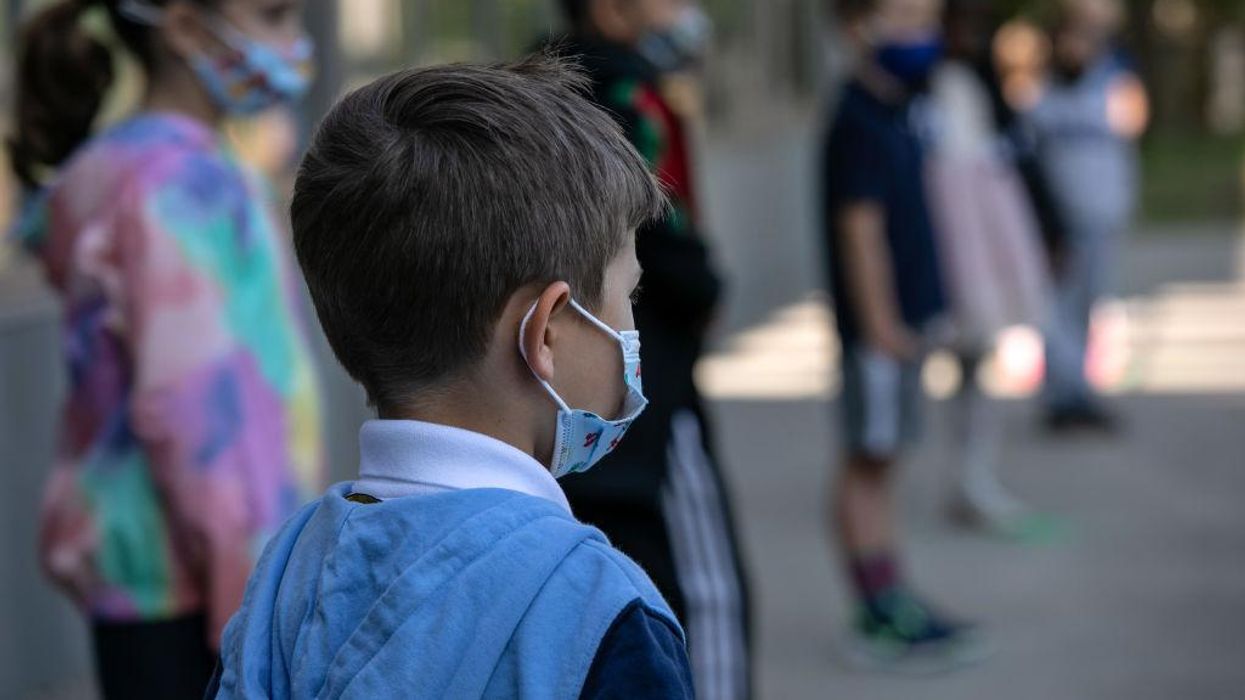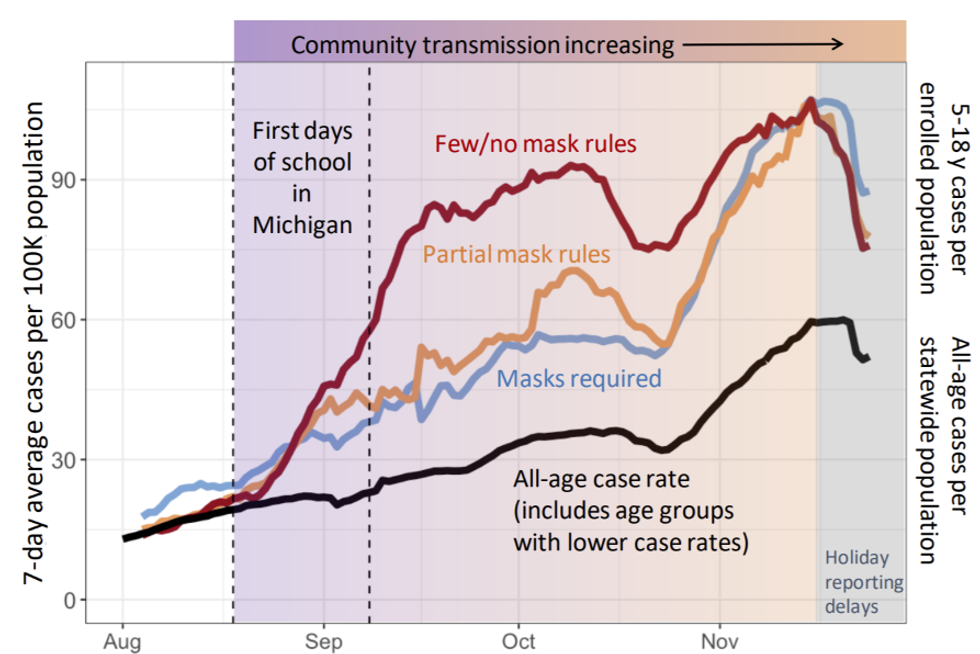
John Moore/Getty Images

The state of Michigan released data last week that show schools with mask mandates have "similar" COVID-19 case rates to those not requiring face coverings.
The state published the "Michigan COVID Response Data and Modeling Update" on Dec. 14. The analysis examined COVID-19 data from the Michigan Department of Health and Human Services and the Michigan Disease Surveillance System as recently as Dec. 3, of school students ages 5-18.
The report stated, "Case rates in 5–18-year-olds have become more similar across mask rule types."
The latest reporting actually shows that schools with "few/no mask rules" had fewer 7-day average cases per 100,000 than schools where masks are required or schools with "partial mask rules."
The report added, "Differences due to masking potentially being washed out by transmission in other settings."
"But the report did not expand further on why kids in communities with mask mandates are seeing the same transmission rates as those without mask policies," Fox News reported.
Despite the transmission results, health officials noted, "It remains important to mask up in indoor settings (schools and otherwise) to prevent transmission."

A peer-reviewed study released in August discovered similar findings that face masks had no significant impact on reducing the spread of COVID-19.
Researchers from the University of Louisville compared COVID-19 case growth in states with mask mandates to states without mandatory mask mandates. The researchers concluded, "Mask mandates and use likely did not affect COVID-19 case growth."
The Centers for Disease Control and Prevention recommends face masks be worn in school, "Due to the circulating and highly contagious Delta variant, CDC recommends universal indoor masking by all students (age 2 and older), staff, teachers, and visitors to K-12 schools, regardless of vaccination status."
In October, CDC Director Rochelle Walensky promoted a study on students wearing masks in Arizona schools.
"After adjusting for potential described confounders, the odds of a school-associated COVID-19 outbreak in schools without a mask requirement were 3.5 times higher than those in schools with an early mask requirement," the study said.
However, the study has since been scrutinized.
The Atlantic published an article last week titled: "The CDC’s Flawed Case for Wearing Masks in School." The author of the article asserted, "The agency’s director has said, repeatedly, that schools without mask mandates have triple the risk of COVID outbreaks. That claim is based on very shaky science."
The Atlantic article stated:
But the Arizona study at the center of the CDC's back-to-school blitz turns out to have been profoundly misleading. "You can't learn anything about the effects of school mask mandates from this study," Jonathan Ketcham, a public-health economist at Arizona State University, told me. His view echoed the assessment of eight other experts who reviewed the research, and with whom I spoke for this article. Masks may well help prevent the spread of COVID, some of these experts told me, and there may well be contexts in which they should be required in schools. But the data being touted by the CDC—which showed a dramatic more-than-tripling of risk for unmasked students—ought to be excluded from this debate. The Arizona study's lead authors stand by their work, and so does the CDC. But the critics were forthright in their harsh assessments. Noah Haber, an interdisciplinary scientist and a co-author of a systematic review of COVID-19 mitigation policies, called the research "so unreliable that it probably should not have been entered into the public discourse."
The study also was significantly flawed since not all of the schools opened at the same time, which meant some schools had as many as three extra weeks to develop a COVID-19 outbreak.
Author David Zweig concluded, "With Biden in the White House, the CDC has promised to 'follow the science' in its COVID policies. Yet the circumstances around the Arizona study seem to show the opposite."